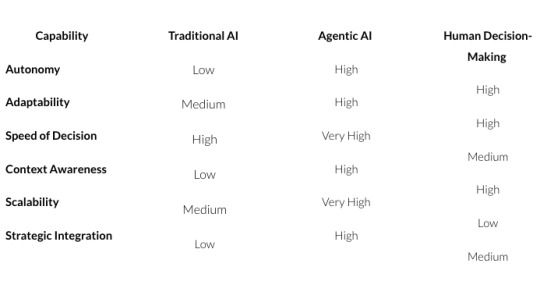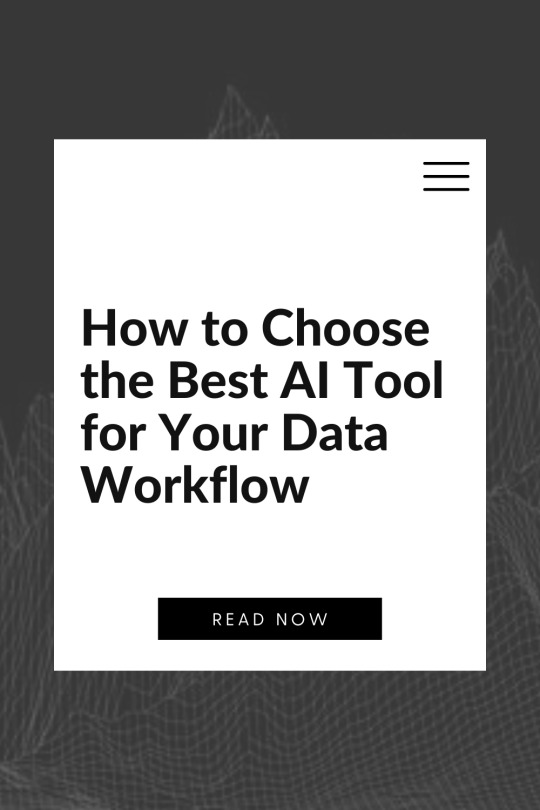#Digital Data Processing
Explore tagged Tumblr posts
Text
डेटा प्रोटेक्शन एक्ट से RTI पर हमला, लोकतंत्र और पारदर्शिता खतरे में; 500 करोड़ का लगेगा जुर्माना
Delhi News: केंद्र की मोदी सरकार द्वारा लाया गया डेटा प्रोटेक्शन एक्ट (Digital Personal Data Protection Act, 2023) सूचना का अधिकार अधिनियम (RTI Act, 2005) को कमजोर करने की दिशा में एक बड़ा कदम माना जा रहा है। इस नए कानून के तहत सरकार व्यक्तिगत डेटा को छुपाने का अधिकार हासिल कर सकती है, जिससे भ्रष्टाचार को उजागर करने वाले खोजी पत्रकारों और RTI कार्यकर्ताओं पर भारी जुर्माना लगाने का रास्ता खुल गया…
#500 Crore Penalty#bank fraud#Corruption Policies#Data Protection Act#Digital Data Processing#Investigative Journalism#Modi government#personal data#Prashant Kumar#Ration Card Fraud#rti act 2005#Supreme Court#Voter List Manipulation
0 notes
Text

60s era Sperry Rand UNIVAC nameplate.
#the 60s#the 1960s#computing#vintage computers#vintage tech#vintage technology#technology#the digital age#vintage electronics#electronics#digital computers#digital computing#data entry#univac#sperry#sperry rand#the rand corporation#sperry univac#minicomputers#mainframe computers#data processing
44 notes
·
View notes
Text
Role of Document Processing in Healthcare Digital Transformation

There is a significant role of document processing approach in the healthcare sector. Considering the massive data files, processing enhances the quality of results while medical experts can serve better. Here are some detailed insights on data processing's role in health digital transformation.
#document processing#data processing outsourcing#document processing services#data processing services#healthcare data conversion#forms processing services#medical records digitization
2 notes
·
View notes
Text
EKOMILK ULTRA-MB MILK ANALYSER - i-markt
The EKOMILK ULTRA-MB Milk Analyser is an advanced device designed for precise milk quality analysis. With its user-friendly interface and robust design, the EKOMILK ULTRA-MB is suitable for both on-farm and laboratory settings. Its portability allows for flexible testing environments, making it an essential tool for maintaining milk hygiene and optimizing production processes.

#India milk analyzer#data processing unit#digital stirrer#milk analyzers spares part#Dairy Electronic Appliances#VK Data Processing Unit#Automatic Milk Data Processor Unit For Dairy#Milk Data Processor Smart Dpu#Milk Data Processor#Automatic Milk Data Processor#Milk scanner#Optek 17#Mk3544#Ekomilk ultra#Milk analyzer
2 notes
·
View notes
Text

Agentic AI: The Next Evolution of Autonomous Business Systems
As markets evolve and competition intensifies across every industry, organizations are under immense pressure to find smarter, faster, and more adaptable solutions to stay ahead. One of the most promising developments in artificial intelligence is the rise of Agentic AI. Unlike traditional AI systems that operate under rigid instruction sets, Agentic AI exhibits autonomy, adaptability, and decision-making capabilities that mirror human-like behaviour. This transformative leap is poised to redefine how businesses operate, optimize, and scale.

What is Agentic AI?
Agentic AI refers to systems designed to act as autonomous agents capable of perceiving their environment, making decisions, and executing actions in pursuit of specific goals. These AI agents are not merely reactive; they are proactive, strategic, and capable of learning over time. While traditional AI relies on explicit programming to function within predefined parameters, Agentic AI systems exhibit goal-oriented behaviour and can operate independently with minimal human intervention.
Agentic AI is built upon advancements in several core areas of AI research:
Reinforcement Learning: Enables agents to learn optimal behaviours through trial and error.
Cognitive Architectures: Provides frameworks that mimic human decision-making processes.
Multi-Agent Systems: Facilitates collaboration and competition between multiple autonomous agents.
Natural Language Processing (NLP): Allows agents to understand and communicate using human language.
Together, these technologies empower Agentic AI to engage in complex tasks such as strategic planning, resource allocation, customer interaction, and even creative problem-solving.
Key Characteristics of Agentic AI
Autonomy: Agentic AI systems operate independently, requiring minimal human oversight once objectives are defined.
Goal-Directed Behaviour: These systems pursue high-level objectives rather than executing narrow, task-specific instructions.
Adaptability: They adjust strategies and actions based on real-time data and evolving conditions.
Interactivity: Agentic AI can engage with users and systems through natural language and interfaces.
Self-Improvement: Through continuous learning and feedback, Agentic AI can enhance its performance over time.
Business Systems Powered by Agentic AI
Agentic AI is not just transforming individual workflows; it’s redefining entire business systems from the ground up. These agents are evolving from operational tools into dynamic components of enterprise architecture, capable of orchestrating complex interdependencies across departments.
1. Autonomous Business Operations
Agentic AI can manage end-to-end business processes with little to no human intervention. These agents are integrated into enterprise resource planning (ERP), supply chain management (SCM), and customer relationship management (CRM) systems, turning them from static data repositories into proactive, decision-making ecosystems. For example, a procurement agent can dynamically renegotiate supplier contracts based on market fluctuations and risk analysis, while another manages compliance updates across jurisdictions.
2. Customer Experience Systems
By embedding agentic models within customer-facing systems, businesses can build AI-powered service layers that anticipate needs, resolve issues, and deliver personalized experiences. Unlike static chatbots or scripted IVRs, Agentic AI can traverse multiple customer touchpoints (email, chat, voice, social) and deliver consistent, context-aware support.
3. Sales and Marketing Platforms
Agentic AI enables continuous experimentation and optimization in marketing systems. These agents autonomously test messaging, allocate budgets across platforms, and modify content strategies based on user engagement and real-time analytics. In CRM systems, they identify upsell opportunities, draft personalized communications, and coordinate multi-channel campaigns, essentially becoming an autonomous marketing operations layer.
4. Finance and Risk Management
In finance departments, Agentic AI is reshaping systems like forecasting, budgeting, and compliance monitoring. Agents can generate real-time cash flow projections, detect anomalies in expense reports, or autonomously trigger fraud investigation protocols. As finance systems become more modular and API-driven, Agentic AI acts as the "glue" coordinating across them, making intelligent decisions without waiting on batch processes or human review.
5. Human Capital Systems
Talent management platforms infused with Agentic AI can manage workforce planning, skill development, and internal mobility. For example, an internal agent could monitor team workloads, project deadlines, and employee engagement metrics, and then recommend internal transfers or hiring actions. These agents don’t just automate HR tasks; they actively shape the workforce strategy.
The Strategic Layer: Agentic AI as Enterprise Orchestrator
Perhaps the most transformative potential lies in Agentic AI’s ability to operate as an orchestration layer across disparate business systems. Imagine a "Chief Operations Agent" that interfaces with finance, sales, HR, and logistics, balancing priorities, identifying cross-functional inefficiencies, and reallocating resources in real time.
Such a system could:
Adjust pricing models based on supply chain costs and customer demand.
Initiate hiring sprees based on projected sales pipeline activity.
Re-prioritize product development sprints based on customer feedback and competitor moves.
These agents don’t just automate; they synchronize and strategize, providing a layer of continuous enterprise optimization.
“Software is eating the world, but AI is going to eat software.” — Jensen Huang (CEO of NVIDIA)
The Benefits of Agentic AI in Business
The integration of Agentic AI into business systems offers a multitude of advantages:
Scalability: Agentic AI can manage increased workloads without proportional increases in cost or human resources.
Efficiency: By automating repetitive and complex tasks, businesses can redirect human talent to higher-value initiatives.
Resilience: These systems can quickly adapt to disruptions, making businesses more agile and robust.
Data Utilization: Agentic AI can analyze and act upon massive datasets far beyond human capabilities, uncovering hidden insights and opportunities.
Continuous Optimization: With the ability to learn and evolve, Agentic AI ensures that processes are constantly improving.
Comparison: Traditional AI vs. Agentic AI vs. Human Decision-Making

Challenges & Considerations
While the potential of Agentic AI is enormous, its adoption also presents challenges that businesses must navigate carefully:
Ethical Concerns: Autonomy raises questions about decision accountability, data use, and fairness.
Security Risks: Autonomous agents must be hardened against manipulation and breaches.
Integration Complexity: Replacing or augmenting legacy systems can be resource-intensive.
Governance and Control: Clear frameworks must define when and how AI agents act independently.
Overcoming these challenges requires a combination of strong internal governance, AI ethics frameworks, and next-generation IT infrastructure.
The Future of Agentic AI
The trajectory of Agentic AI suggests a future where businesses function as decentralized networks of intelligent agents collaborating in real time. Imagine a digital enterprise where finance, logistics, customer service, and strategy are orchestrated not by departments, but by autonomous agents that seamlessly integrate and adapt to changing circumstances.
We are likely to see the rise of meta-agents, which are AI systems that manage other agents, coordinate cross-domain workflows, and enforce organizational goals. These will serve as the AI equivalent of the executive suite, translating strategy into dynamic execution.
Additionally, the democratization of Agentic AI through low-code/no-code platforms will empower non-technical users to deploy and manage AI agents without technical barriers; further accelerating innovation across all levels of an organization.
We’re standing at the cusp of a new industrial revolution, one not powered by steam or silicon, but by intelligent autonomy. Agentic AI is more than just another technological advancement; it's a reimagining of how work gets done. As these systems become more capable, their role in business will shift from tool to collaborator and from support system to strategic partner.
Embracing Agentic AI requires more than investment. It demands systems thinking, executive sponsorship, and a willingness to challenge the status quo.
Learn more about DataPeak:
#factr#datapeak#saas#technology#agentic ai#artificial intelligence#machine learning#ai#ai-driven business solutions#machine learning for workflow#ai solutions for data driven decision making#ai business tools#ai agents#digital technology#digital trends#digitaltools#datadrivendecisions#data driven decision making#dataanalytics#ai platform for business process automation#ai for business efficiency#ai business solutions#ai driven business solutions#business#ai technology#techinnovation
0 notes
Text
Data Unbound: Embracing NoSQL & NewSQL for the Real-Time Era.
Sanjay Kumar Mohindroo Sanjay Kumar Mohindroo. skm.stayingalive.in Explore how NoSQL and NewSQL databases revolutionize data management by handling unstructured data, supporting distributed architectures, and enabling real-time analytics. In today’s digital-first landscape, businesses and institutions are under mounting pressure to process massive volumes of data with greater speed,…
#ACID compliance#CIO decision-making#cloud data platforms#cloud-native data systems#column-family databases#data strategy#data-driven applications#database modernization#digital transformation#distributed database architecture#document stores#enterprise database platforms#graph databases#horizontal scaling#hybrid data stack#in-memory processing#IT modernization#key-value databases#News#NewSQL databases#next-gen data architecture#NoSQL databases#performance-driven applications#real-time data analytics#real-time data infrastructure#Sanjay Kumar Mohindroo#scalable database solutions#scalable systems for growth#schema-less databases#Tech Leadership
0 notes
Text
How to Automate Document Processing for Your Business: A Step-by-Step Guide
Managing documents manually is one of the biggest time drains in business today. From processing invoices and contracts to organizing customer forms, these repetitive tasks eat up hours every week. The good news? Automating document processing is simpler (and more affordable) than you might think.
In this easy-to-follow guide, we’ll show you step-by-step how to automate document processing in your business—saving you time, reducing errors, and boosting productivity.
What You’ll Need
A scanner (if you still have paper documents)
A document processing software (like AppleTechSoft’s Document Processing Solution)
Access to your business’s document workflows (invoices, forms, receipts, etc.)
Step 1: Identify Documents You Want to Automate
Start by making a list of documents that take up the most time to process. Common examples include:
Invoices and bills
Purchase orders
Customer application forms
Contracts and agreements
Expense receipts
Tip: Prioritize documents that are repetitive and high volume.
Step 2: Digitize Your Paper Documents
If you’re still handling paper, scan your documents into digital formats (PDF, JPEG, etc.). Most modern document processing tools work best with digital files.
Quick Tip: Use high-resolution scans (300 DPI or more) for accurate data extraction.
Step 3: Choose a Document Processing Tool
Look for a platform that offers:
OCR (Optical Character Recognition) to extract text from scanned images
AI-powered data extraction to capture key fields like dates, names, and totals
Integration with your accounting software, CRM, or database
Security and compliance features to protect sensitive data
AppleTechSoft’s Document Processing Solution ticks all these boxes and more.
Step 4: Define Your Workflow Rules
Tell your software what you want it to do with your documents. For example:
Extract vendor name, date, and amount from invoices
Automatically save contracts to a shared folder
Send expense reports directly to accounting
Most tools offer an easy drag-and-drop interface or templates to set these rules up.
Step 5: Test Your Automation
Before going live, test the workflow with sample documents. Check if:
Data is extracted accurately
Documents are routed to the right folders or apps
Any errors or mismatches are flagged
Tweak your settings as needed.
Step 6: Go Live and Monitor
Once you’re confident in your workflow, deploy it for daily use. Monitor the automation for the first few weeks to ensure it works as expected.
Pro Tip: Set up alerts for any failed extractions or mismatches so you can quickly correct issues.
Bonus Tips for Success
Regularly update your templates as your document formats change
Train your team on how to upload and manage documents in the system
Schedule periodic reviews to optimize and improve your workflows
Conclusion
Automating document processing can transform your business operations—from faster invoicing to smoother customer onboarding. With the right tools and a clear plan, you can streamline your paperwork and focus on what matters most: growing your business.
Ready to get started? Contact AppleTechSoft today to explore our Document Processing solutions.
#document processing#business automation#workflow automation#AI tools#paperless office#small business tips#productivity hacks#digital transformation#AppleTechSoft#business technology#OCR software#data extraction#invoicing automation#business growth#time saving tips
1 note
·
View note
Text

🚨 Fraud detection is not a solo mission
🔒 Fraud doesn’t happen in isolation
Neither should your defense
At Fraud.net, they’re protecting global organizations through our 🌐 Global anti-fraud Network.
In today’s complex landscape, working in silos with limited visibility of global fraud data and emerging threats is a challenge.
The powerful network of real time intelligence helps break through those barriers, delivering the clarity and confidence needed to act.
What this means for you:
🔍 You tap into a trusted and effective intelligence network
📉 You reduce risk and operational costs
🛡️ You deliver a safer, more secure experience for your customers
It’s about collective intelligence
It’s about stopping fraud before it impacts your revenue
Let’s connect the dots
🔗 More here: https://www.fraud.net/technology/global-anti-fraud-network
#ai#artificial intelligence#fraud prevention#internet fraud#fintech#payment processing#ecommerce solutions#digital banking#cybersecurity#big data
0 notes
Text
0 notes
Text
0 notes
Text

A page from Sperry UNIVAC’s computer brochure - 1976.
#the 70s#the 1970s#computing#vintage computers#vintage tech#vintage technology#technology#the digital age#vintage electronics#electronics#digital computers#digital computing#data entry#univac#sperry#sperry rand#the rand corporation#sperry univac#hey you start computing#minicomputers#mainframe computers#data processing
48 notes
·
View notes
Text
Image Processing Services for Ecommerce Business

Image processing has become vital for eCommerce businesses to bring effective results, increase sales, improve brand value, and attract customers. Learn how image processing services help eCommerce businesses to grow.
#image processing#image processing services#digital image processing#data processing services#data extraction from image#image conversion services#image processing solutions#outsource data processing#data digitization company
3 notes
·
View notes
Text
AI-Powered Business Analytics: Make Smarter Decisions, Faster
AI-Powered Business Analytics Make Smarter Decisions, Faster 💡 AI-powered analytics give you instant insights into what’s working and what’s not. Learn how to use AI to optimize business decisions. The Problem: Are You Guessing or Growing? Let’s be real—making business decisions based on gut feelings is like throwing darts blindfolded. Sure, you might hit the target occasionally, but most of…
#AI automation for business#AI business analytics#AI business optimization tools#AI customer insights#AI data analysis#AI data visualization#AI for advertising performance#AI for audience segmentation#AI for business intelligence#AI for business scalability#AI for customer retention#AI for customer segmentation#AI for demand prediction#AI for eCommerce analytics#AI for financial forecasting#AI for operational decision-making#AI for process optimization#AI for revenue optimization#AI for ROI maximization#AI for sales forecasting#AI for sales optimization#AI for small business growth#AI in corporate decision-making#AI in digital marketing#AI in marketing analytics#AI operational efficiency#AI performance tracking#AI predictive analytics#AI-driven business strategy#AI-driven competitive analysis
0 notes
Text

How to Choose the Best AI Tool for Your Data Workflow
AI isn’t just changing the way we work with data, it’s opening doors to entirely new possibilities. From streamlining everyday tasks to uncovering insights that were once out of reach, the right AI tools can make your data workflow smarter and more efficient. But with so many options out there, finding the one that fits can feel like searching for a needle in a haystack. That’s why taking the time to understand your needs and explore your options isn’t just smart, it’s essential.
In this guide, we’ll walk you through a proven, easy-to-remember decision-making framework: The D.A.T.A. Method: a 4-step process to help you confidently choose the AI tool that fits your workflow, team, and goals.

The D.A.T.A. Method: A Framework for Choosing AI Tools
The D.A.T.A. Method stands for:
Define your goals
Analyze your data needs
Test tools with real scenarios
Assess scalability and fit
Each step provides clarity and focus, helping you navigate a crowded market of AI platforms with confidence.
Step 1: Define Your Goals
Start by identifying the core problem you’re trying to solve. Without a clear purpose, it’s easy to be distracted by tools with impressive features but limited practical value for your needs.
Ask yourself:
What are you hoping to achieve with AI?
Are you focused on automating workflows, building predictive models, generating insights, or something else?
Who are the primary users: data scientists, analysts, or business stakeholders?
What decisions or processes will this tool support?
Having a well-defined objective will help narrow down your choices and align tool functionality with business impact.
Step 2: Analyze Your Data Needs
Different AI tools are designed for different types of data and use cases. Understanding the nature of your data is essential before selecting a platform.
Consider the following:
What types of data are you working with? (Structured, unstructured, text, image, time-series, etc.)
How is your data stored? (Cloud databases, spreadsheets, APIs, third-party platforms)
What is the size and volume of your data?
Do you need real-time processing capabilities, or is batch processing sufficient?
How clean or messy is your data?
For example, if you're analyzing large volumes of unstructured text data, an NLP-focused platform like MonkeyLearn or Hugging Face may be more appropriate than a traditional BI tool.
Step 3: Test Tools with Real Scenarios
Don’t rely solely on vendor claims or product demos. The best way to evaluate an AI tool is by putting it to work in your own environment.
Here’s how:
Use a free trial, sandbox environment, or open-source version of the tool.
Load a representative sample of your data.
Attempt a key task that reflects a typical use case in your workflow.
Assess the output, usability, and speed.
During testing, ask:
Is the setup process straightforward?
How intuitive is the user interface?
Can the tool deliver accurate, actionable results?
How easy is it to collaborate and share results?
This step ensures you're not just selecting a powerful tool, but one that your team can adopt and scale with minimal friction.
Step 4: Assess Scalability and Fit
Choosing a tool that meets your current needs is important, but so is planning for future growth. Consider how well a tool will scale with your team and data volume over time.
Evaluate:
Scalability: Can it handle larger datasets, more complex models, or multiple users?
Integration: Does it connect easily with your existing tech stack and data pipelines?
Collaboration: Can teams work together within the platform effectively?
Support: Is there a responsive support team, active user community, and comprehensive documentation?
Cost: Does the pricing model align with your budget and usage patterns?
A well-fitting AI tool should enhance (not hinder) your existing workflow and strategic roadmap.
“The best tools are the ones that solve real problems, not just the ones with the shiniest features.”
— Ben Lorica (Data scientist and AI conference organizer)
Categories of AI Tools to Explore
To help narrow your search, here’s an overview of AI tool categories commonly used in data workflows:
Data Preparation and Cleaning
Trifacta
Alteryx
DataRobot
Machine Learning Platforms
Google Cloud AI Platform
Azure ML Studio
H2O.ai
Business Intelligence and Visualization
Tableau – Enterprise-grade dashboards and visual analytics.
Power BI – Microsoft’s comprehensive business analytics suite.
ThoughtSpot – Search-driven analytics and natural language querying.
DataPeak by Factr – A next-generation AI assistant that’s ideal for teams looking to enhance decision-making with minimal manual querying.
AI Automation and Workflow Tools
UiPath
Automation Anywhere
Zapier (AI integrations)
Data Integration and ETL
Talend
Fivetran
Apache NiFi
Use the D.A.T.A. Method to determine which combination of these tools best supports your goals, data structure, and team workflows.
AI Tool Selection Checklist
Here’s a practical checklist to guide your evaluation process:
Have you clearly defined your use case and goals?
Do you understand your data’s structure, source, and quality?
Have you tested the tool with a real-world task?
Can the tool scale with your team and data needs?
Is the pricing model sustainable and aligned with your usage?
Does it integrate smoothly into your existing workflow?
Is support readily available?
Selecting the right AI tool is not about chasing the newest technology, it’s about aligning the tool with your specific needs, goals, and data ecosystem. The D.A.T.A. Method offers a simple, repeatable way to bring structure and strategy to your decision-making process.
With a thoughtful approach, you can cut through the noise, avoid common pitfalls, and choose a solution that genuinely enhances your workflow. The perfect AI tool isn’t the one with the most features, it’s the one that fits your needs today and grows with you tomorrow.
Learn more about DataPeak:
#datapeak#factr#saas#technology#agentic ai#artificial intelligence#machine learning#ai#ai-driven business solutions#machine learning for workflow#digitaltools#digital technology#digital trends#datadrivendecisions#dataanalytics#data driven decision making#agentic#ai solutions for data driven decision making#ai business tools#aiinnovation#ai platform for business process automation#ai business solutions
0 notes
Text
ERP Implementation Success: Key Steps for a Smooth Transition
Embarking on an ERP Implementation Success journey is both exciting and challenging for any organization. To achieve ERP Implementation Success, businesses must follow key steps, anticipate potential challenges, and apply effective strategies. From planning and vendor selection to data migration and training, this article explores the essential aspects of ERP implementation to ensure a smooth and…
#Business Efficiency#Business Transformation#change management#Data Migration#Digital Transformation#Enterprise Software#ERP Best Practices#ERP Challenges#ERP Implementation#ERP Success#Process Optimization#Project Management#System Integration#User Training#Vendor Selection
0 notes
Text
How to Write Blog Posts That Rank on Google in 2024

Want your blog posts to rank #1 on Google? Discover proven SEO writing strategies to boost traffic, from keyword research to on-page optimization. Learn how to craft engaging content, structure posts for readability, and outrank competitors with actionable tips. Perfect for bloggers, marketers, and businesses!
0 notes